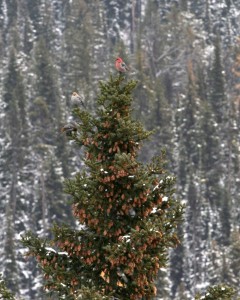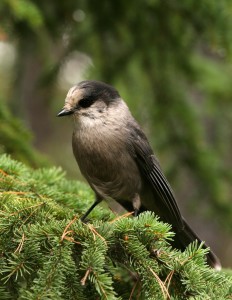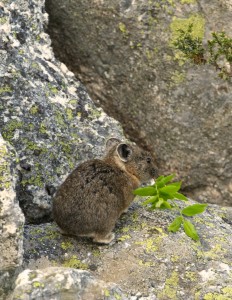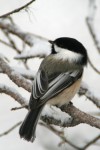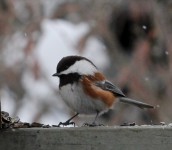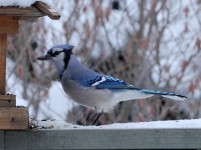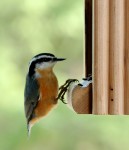Last weekend, the chickadees and nuthatches finally found the two bird feeders I filled several weeks ago. For birds, finding a full feeder is like finding a Thanksgiving feast.
Surviving winter is feast or famine for animals that don’t migrate or hibernate. Plentiful insects, fruits and green vegetation are gone or hard to find. Once an animal finds a feast, it will frequently come back, eat it all at once or cache it away for times of famine.
The chickadees and nuthatches don’t stay at my feeder all day, but come in waves. They make their rounds between known food sources–maybe even the neighbor’s bird feeders. Before they found my feeders, they fed on the cones in the Douglas-fir trees in the yard every morning.
Some flocks of birds feed almost exclusively on seed crops in the winter which makes their movements highly irregular. Redpolls and goldfinches fly between birch stands to feed on small birch seeds. Flocks of crossbills seek out spruce and pine trees to feast on the seeds that their bills are specifically adapted to pry out of the cones.
Hemlocks are the tree of choice for pine siskins whose long, thin bills reach under the bracts of hemlock cones. Waxwings travel in flocks and descend upon berry-laden trees or shrubs and feast until every last berry is gone.
Birds such as waxwings, redpolls and grosbeaks will fly out of their typical range in search of seeds or berries if there is a crop failure in their regular range–which is one way to avoid famine in the winter.
Another way animals avoid famine is to cache food when it is abundant. Only a small percentage of species worldwide cache food for winter. Gray jays cache food all year long by wadding food into a ball, coating it with saliva and wedging it under tree bark. As long as they cache enough food, their excellent memory prevents them from famine in the winter.
Living in mountain talus slopes, the resourceful pika makes hay in the summer by drying grasses and stockpiling it deep within the rocks where snow can’t reach it during the winter.
Red squirrels are notorious for their caches of cones, called middens, scattered throughout the forest. Unlike the mushrooms that squirrels harvest and dry in the crotch of tree branches, they prefer to keep the cones moist. Dry cones are less palatable, so the cool, damp depths of middens are perfect for storing cones.
A few other rodents that stockpile seeds for winter are deer mice, pocket mice and chipmunks. A larger rodent, the beaver, stockpiles trees underwater to feast on all winter.
Fewer animals stockpile meat for winter. Saw-whet and great horned owls create their own frozen dinners by killing and stockpiling mice. Then to eat a mouse, the owl sits on it like it is incubating an egg until the mouse is thawed enough to tear apart and eat.
Then there are those animals that take advantage of other species caches to survive. Elk and deer feast on hay bales in fields and barns, turkeys feed on grain spilled next to grain bins, and birds feast on the cache of sunflower seeds hanging outside my window.

